China # 16 – Pingyáo, the ancient walled city – September 2014
OK, Pingyáo was not on our list of “must see” places as we traveled across China. At the time, our primary Lonely Planet China guide book did not even mention it, but once again our personal guide, Green, knew better. To our pleasure and amazement, Pingyáo is China’s best-preserved ancient walled city. Moreover, it is not some made-up tourist attraction. Thousands of local residents live here, down narrow alleys and behind creaking wooden doors that lead into courtyards where laundry was hung to dry, bicycles leaned against ancient rock walls and locals gossiped in the sun.
Pingyáo – a reflection of old China
While most of the historical sections that were once part of other cities we had seen had been bulldozed and replaced with ugly block buildings and grey apartments, Pingyáo has managed to keep its old spirit intact.
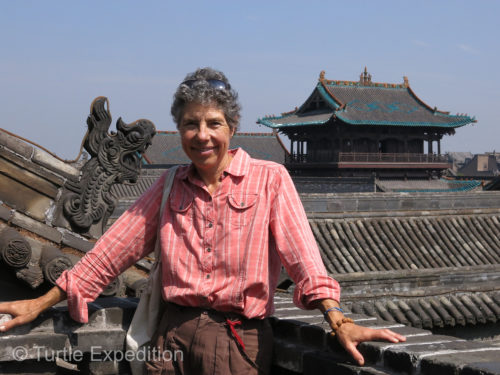
As we strolled the ramparts of the amazing ancient city of Pingyáo, we had to snap a couple of memory shots.
Walking along the ramparts of the magnificent city walls gave us a mosaic of tile rooftops and a private look into backyards. A unique birds-eye view of some of the wonderful old buildings including the Confucius Temple, the City God Temple and a Taoist Temple. Back on street level, there were doorways to peak into and bronze statues that depicted the history of the old financial center back in 1823. Roof peaks and arches were elaborately adorned with carved or sculpted dragons and other symbolic images.
The city center was free of cars, with bicycles and electric scooters taking locals to where they needed to go. Interesting foods were everywhere to tempt us, as well as souvenirs. The city is famous for its beautiful lacquerware.
Despite being somewhat of a tourist town, (predominantly Chinese – we only saw two Westerners), the local people were uncommonly friendly, and not the norm in China, even the bathrooms were clean and where they should be—except for the young children who still didn’t need one.
After strolling the streets for a day to visit some of the temples and historic sights, we were both ready for a relaxing foot and leg massage, a specialty along the pedestrian mall. We found a quiet restaurant to enjoy an early dinner. Later we treated ourselves to a fabulous folkloric dance and show depicting the history of this ancient city. It was called “又见平遥” (Youjian Pingyáo – See Pingyao Again). At night, Pingyáo took on new personality. Temples were lit and streets were hung with colorful lanterns.
We spent a quiet night in front of Green’s hotel. Pingyáo would be one of the few places we stayed for two nights, one of our favorite stops along what we imagined may have been part of the New Silk Road leading to Beijing and the busy ports of the Yellow Sea.
Note: We couldn’t resist posting all the photos below to give you a better impression of fabulous Pingyáo.
- Pingyáo was a busy tourist city so finding a hotel where we could park was not difficult.
- Pingyáo is China’s best-preserved ancient walled city. Historians say that it was built in the Western Zhou King period, 827 BC to 782 BC.
- The view from the ramparts gave us a mosaic of tile rooftops and a private look into backyards including a unique birds eye view of some of the wonderful old buildings including the Confucius Temple, the City God Temple and the Taoist Temple.
- Interesting stone and bronze sculptures gave impressions of the history.
- Turtles are always a good luck symbol. We wondered how many thousand hands had patted the back of this guy.
- Pingyáo was a center for both business and the arts.
- In the olden days there was a team of town night watchmen. One carried a gong and the other a clapper. They would sound their gong and clapper every two hours from dusk to dawn.
- Unique decorations and paintings were part of the charm.
- This was an interesting urn were worshipers left their prayers. We liked the legs on the base.
- One of the city gates of Pingyáo.
- Various temples including the Confucius Temple, the City God Temple and the Taoist Temple were all magnificent.
- At night they were even more beautiful.
- Archways always seemed to lead to somewhere special.
- Roof peaks and arches were elaborately adorned with carved or sculpted dragons and other symbolic images.
- Old paintings, before cameras were invented, gave an impression of the Silk Road days.
- This old grinding mill was a treasure saved, and may have been used not that long ago.
- There were an abundance of shops selling souvenirs.
- Chinese lacquer ware has a long history. Delicate tea sets and beautiful boxes were for sale. Pingyáo’s polished lacquer products date back more than 4,200 years.
- There was always plenty of street food for a quick snack.
- Big ceramic jugs held Chinese liquor which Pingyáo is apparently famous for.
- These black urns were full of vinegar, equally famous.
- Green was inquiring about the different vinegars for sale.
- This vendor let us taste various vinegars.
- It’s always nice to see the kitchen before you eat at one of these hole-in-the-wall cafés.
- Once again, Green picked out some wonderful dishes for us to taste.
- Why do the Chinese persist on using seats and tables in cafés for midgets?
- Cigarettes and Coke were always available at little street vendor wagons.
- We did not pass up the chance to buy some fresh Chinese cabbage & leek.
- Some of the old historic buildings like this school were open to the public.
- An antique closet was decorated with many paintings.
- This looks like a heatable platform to be used in winter.
- Striking the ceremonial Confucian drum had many meanings.
- Always time for a game of Chinese checkers or ??
- We had to wonder if this teapot was ever used.
- There were many colorful flower beds in the park adjacent to the entrance of old Pingyáo.
- Wandering down alleys and narrow streets gave us a different feeling for this old town where thousands of ordinary Chinese live.
- Artfully restored offices of what was a busy financial center were impressive.
- Displays of old weapons came from an era before guns were invented.
- The entrance to this temple was elaborately decorated.
- Sorry, we did not see a way to tell which of these statues was Confucius.
- Heavy duty trailer.
- A horse-drawn cart was the symbol of wealth and rank. Need to know more? Read the next photo.
- This may have been a scaled down version of luxury.
- Times change. Today electric scooters, bikes and even single front seat electric vehicles fill the gap.
- Note this electric car is a 4-door.
- Cute door latch
- interesting fountain
- mobile street sweeper
- Bathrooms were clean and, huh, Chinese with a smile.
- Little kids don’t need no bathroom!!
- Whether selling fresh vegetables, sharpening a cleaver on a stone, sitting in the sun or just going about daily life, Pingyáo was a real town, aside from the tourists.
- In the evening streets were decorated with pretty lanterns.
- The performance called “See Pinygáo again” was spectacular.
- The show “See Pingyáo Again” was steeped in history. Though much of it we could not understand, dancers, actors and singers were outstanding.



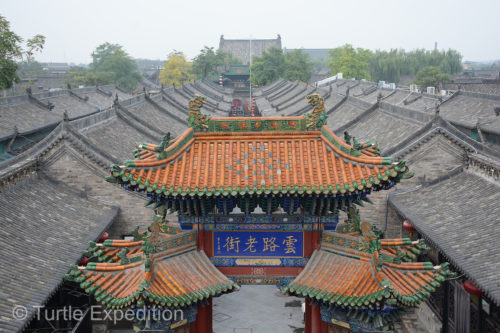
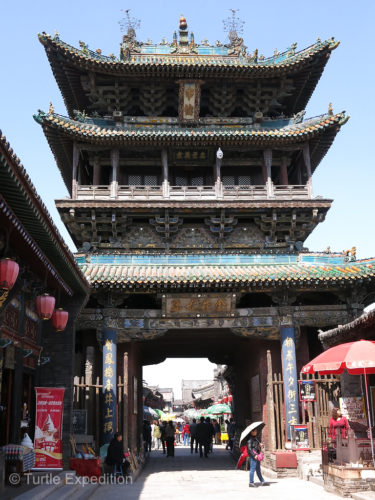
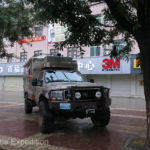
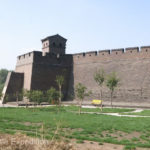
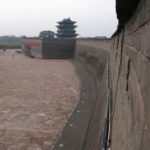
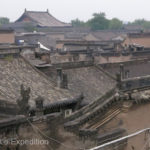
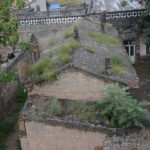
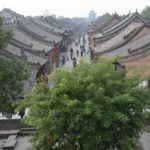
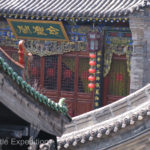
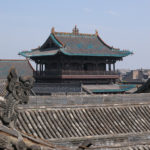
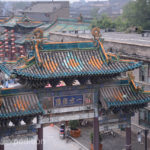
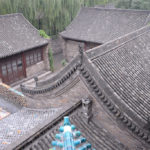
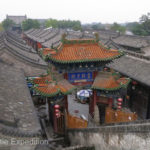
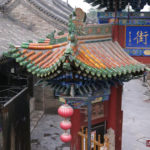
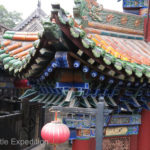
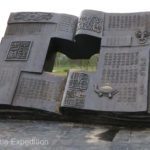
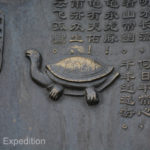
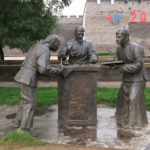
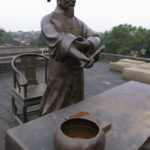
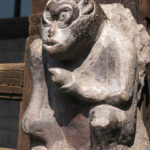
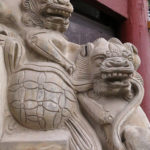
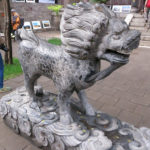
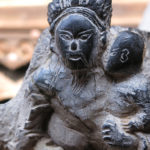
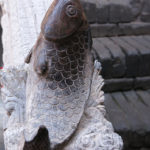
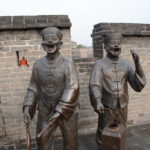
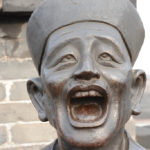
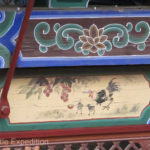
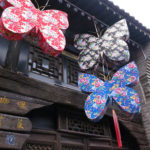
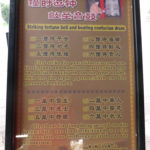
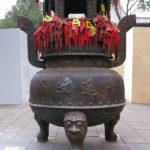
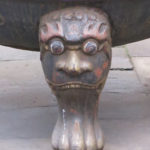
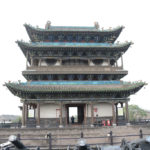
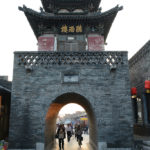
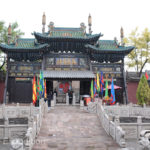
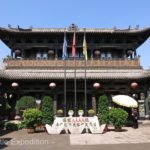
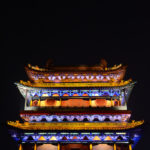
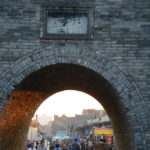
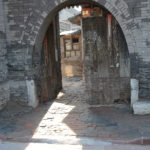
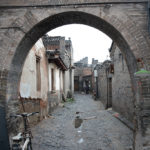
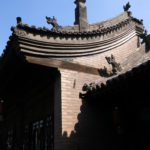
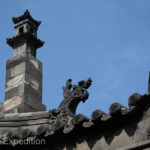
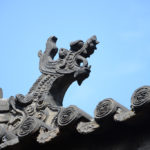
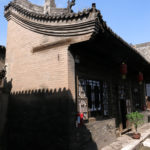
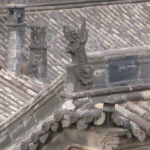
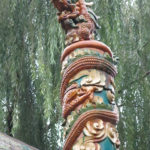
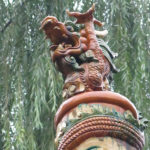
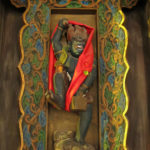
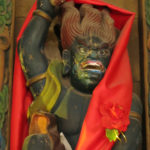
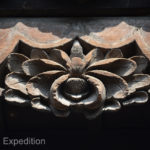
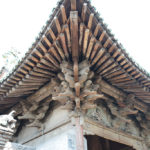
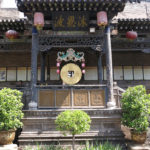
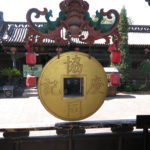
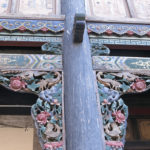
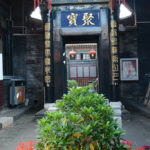
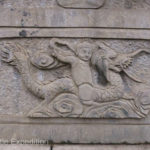
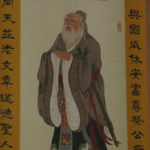
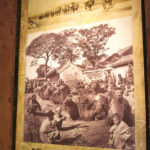
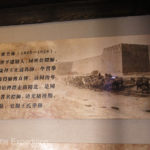
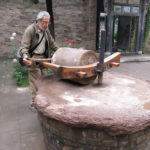
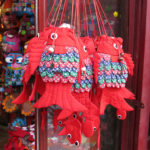
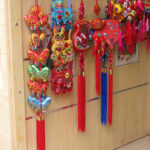
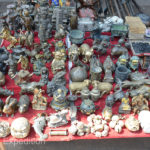
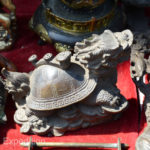
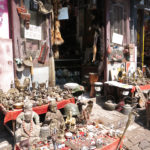
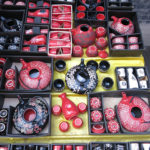
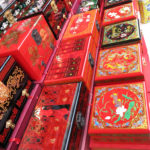
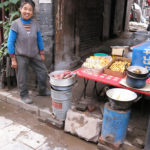
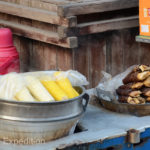
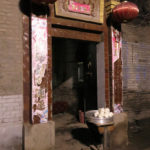
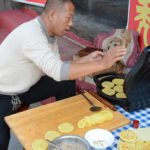
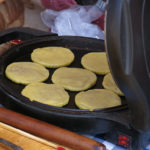
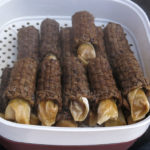
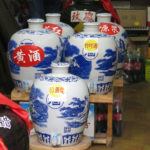
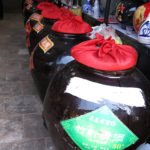
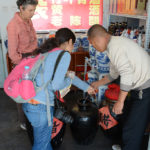
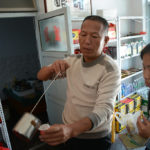
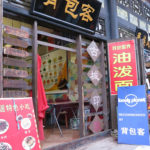
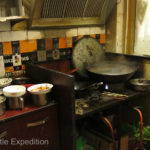
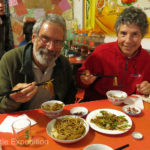
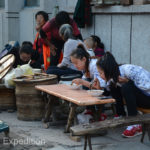
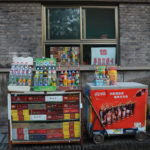
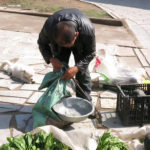
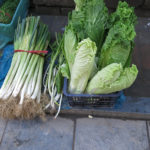
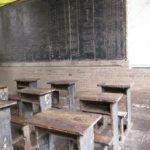
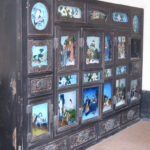
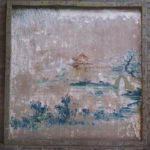
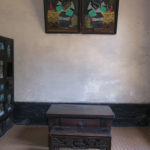
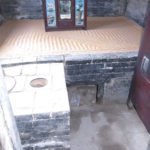
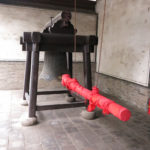
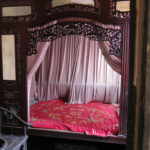
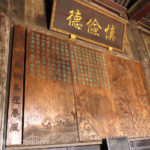
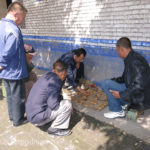
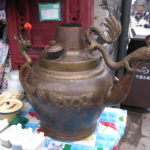
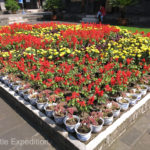
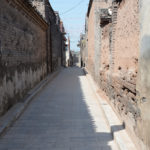
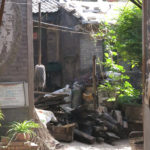
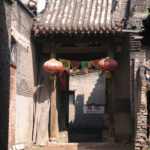
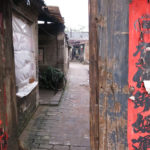
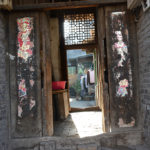
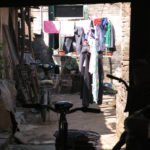
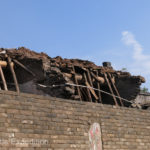
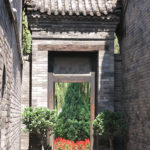
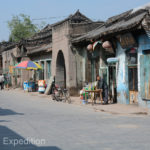
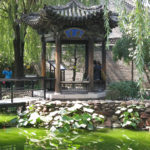
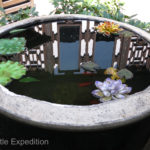
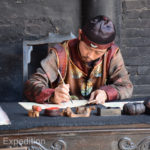
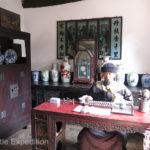
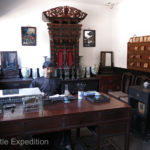
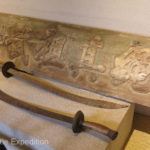
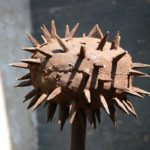
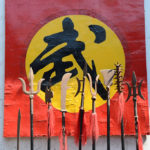
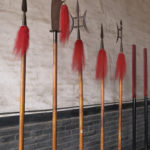
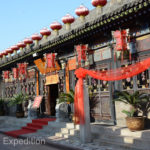
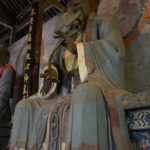
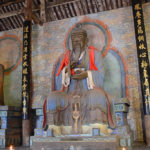
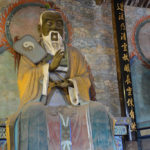
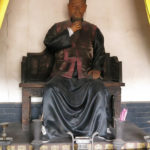
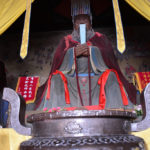
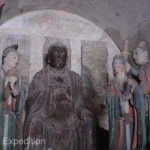
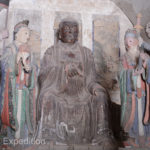
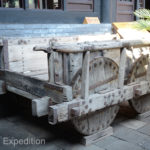
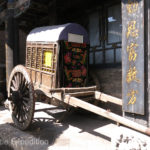
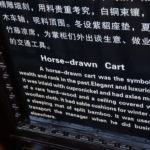
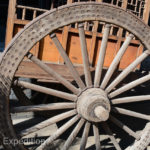
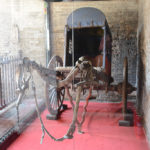
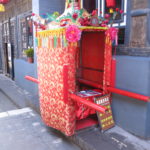
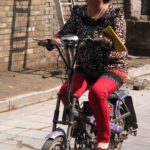
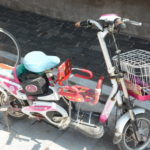
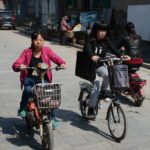
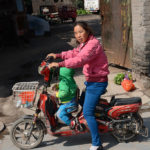
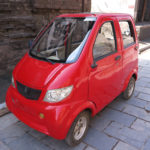
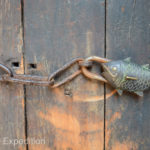

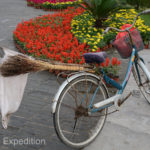
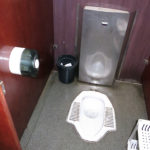
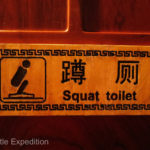
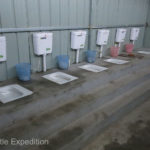
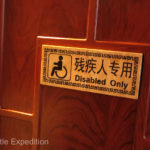
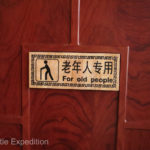
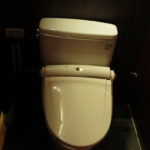
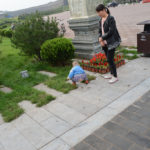
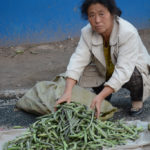
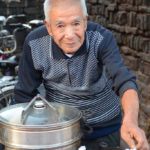
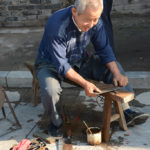
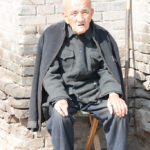
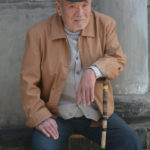
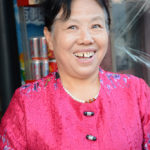
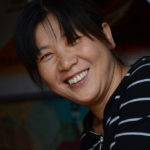

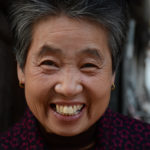
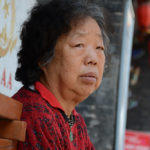
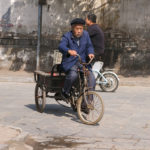
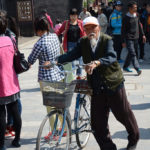
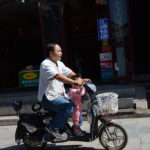
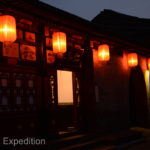
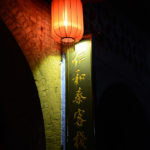
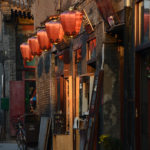
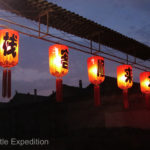
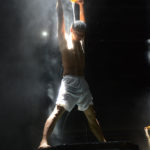
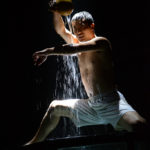
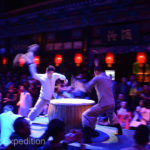
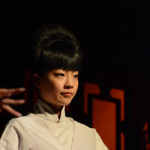
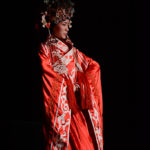
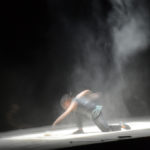
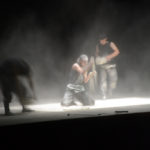





Leave a Comment